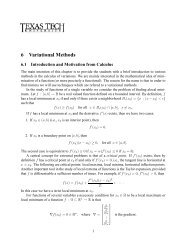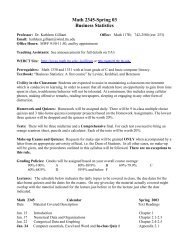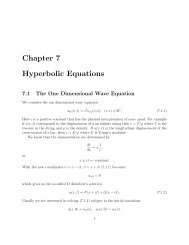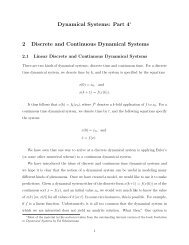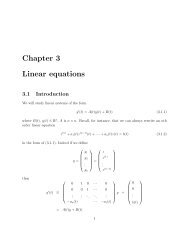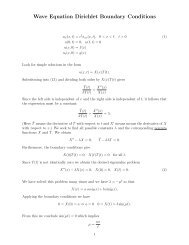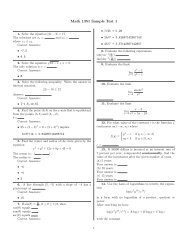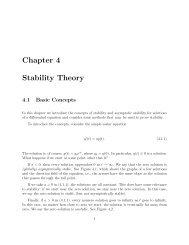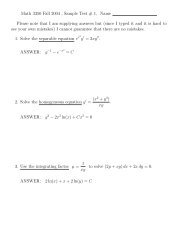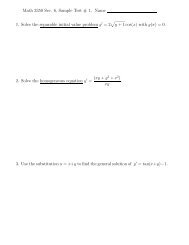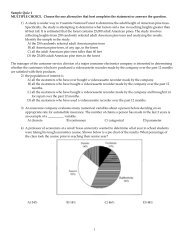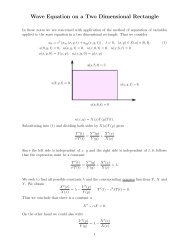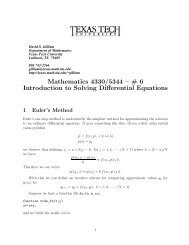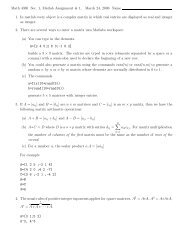Chapter 6 Partial Differential Equations
Chapter 6 Partial Differential Equations
Chapter 6 Partial Differential Equations
Create successful ePaper yourself
Turn your PDF publications into a flip-book with our unique Google optimized e-Paper software.
4 CHAPTER 6. PARTIAL DIFFERENTIAL EQUATIONS<br />
Linear partial differential equation’s are often classified as being of elliptic, hyperbolic, or<br />
parabolic type. What follows is a brief and heuristic discussion of some of the features that<br />
characterize these classifications of partial differential equations. Most of what is presented<br />
in this introduction will be made precise in subsequent chapters.<br />
Elliptic <strong>Equations</strong><br />
An example of an elliptic partial differential equation is Laplace’s equation,<br />
div grad u =0<br />
If u = u(x 1 , ··· ,x n ) and (x 1 , ··· ,x n ) are rectangular Cartesian coordinates, and w(x) =<br />
(w 1 , ··· ,w n ),<br />
grad u = ∇u =(u x1 , ··· ,u xn )<br />
div ⃗w = ∂w + ···+ ∂w<br />
∂x 1 ∂x n<br />
and so<br />
div grad u = ∇·∇u = ∇ 2 u =∆u = u x1 x 1<br />
+ ···+ u xnx n<br />
=0.<br />
The Laplacian of u, ∆u, provides a comparison of values of u at a point with values at<br />
neighboring points. To illustrate this idea consider the simplest case that u = u(x) and<br />
assume u xx (x) > 0. Let ũ denote the tangent line approximation to u. For h>0 and<br />
sufficiently small,<br />
u(x + h) > ũ(x + h) =u(x)+u ′ (x)h<br />
u(x − h) > ũ(x − h) =u(x) − u ′ (x)h<br />
and so<br />
u(x + h)+u(x − h)<br />
>u(x).<br />
2<br />
Roughly stated, u(x) is smaller than its average value at nearby points if u xx (x) > 0. In<br />
higher dimensions, say n = 2, the analogous statement is that if ∆u(x, y) > 0, then the<br />
average value of u at neighboring points, say on a circle about (x, y), is greater than u(x, y).<br />
If ∆u(x, y) < 0, then u(x, y) is greater than the average value of u on a circle about (x, y).<br />
If ∆u(x, y) = 0 then u(x, y) is equal to its average value on a circle about (x, y). (We<br />
will subsequently prove a theorem that makes these ideas rigorous.) More generally, if<br />
∆u(x) =0,x∈ Ω ⊂ R n , then u is equal to its average value at neighboring points everywhere<br />
in Ω. In a certain sense, this says that if u satisfies Laplace’s equation then u represents a<br />
state of equilibrium.



